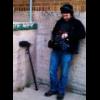All Activity
- Yesterday
-
As an aside on playback; we had a long discussion on The Apple and Biscuit Show Podcast (product placement) recently with Simon Hayes and his on-set playback operator, Josh Winslade about their epic setup for Wicked. Josh went in detail about the why of ProTools for this and how playback in itself is becoming almost a separate credited role in the sound department for productions like these. Have a listen here if interested. (There is also a part two where they go into detail about the networking and wireless setup for the production.)
-
According to this video you can lock the volume for camera hop use. But on the user manual seems like if locked you can still adjust volume (?). Maybe Andrew can chime in here to clarify. Really looking forward for a somehow affordable IFB solution. Never really understood the high prices for IFB products.
- Last week
-
Fair enough. How is this proposed legislation different from the loudness specs that are already required by streamers and broadcasters? I can understand the perspective that this isn't something that needs to be enshrined in legislation, but as a re-recording mixer, aren't you already mixing to a loudness spec already? Is legislation really going to change things for how you work?
-
I second the TXadvance app, it's brilliant and @Compasseur , the dev, is a great helpful person. a great tool to have with you on your cart, your bag, your scouting, your holidays to upload scans.... -edit, I see that you are mentionning macos, it's android based tho. but it's still a great RF tool that is worth mentionning.
-
Seems like a no-brainer to me. Everyone benefits, including advertisers and the entertainment industry. I have no idea why the MPA is against this; no one wins a loudness war; as long as all ads are equally loud, no one is being disadvantaged even if they can no longer be louder than the program audio. Also, the idea that streamers can't specify a delivery spec for ads for technical reasons (and turn down ads that aren't in spec) is laughable. That MPA rep is lying her ass off.
-
This is MacOS only. Has anyone tried it since May? The old Boomcorder and Metacorder are still in occasional use here and there I hear. In this same vein has anyone used another app that can handle timecode from an audio input: VB-Audio MT64-Standard is offering all functions to record and playback 64 audio tracks OS: Windows 10/11 ONLY, fixed price license $125.00 MT128-PRO Version. MT128 is a 128 tracks recorder/player OS: Windows 10 only The MT64/MT128 supports various Timecode sources: MTC, LTC (RME TCO), or native LTC from an audio input.
-
Like a state-level CALM act, I guess. From CalMatters, a good nonprofit and nonpartisan news org in California. So written for a general audience, but with links to the bill, stuff about MPA's response, etc. ===== Sick of loud ads on Netflix? A proposed California law would turn down the volume BY RYAN SABALOW JULY 11, 2025 IN SUMMARY After his staffer’s baby was woken up by a loud ad on a streaming service, a California senator took action to force streamers to turn down the volume on commercials. The entertainment industry is fighting it. --- Ever been streaming a show or a movie and been jolted out of your entertainment reverie by an ad so loud it felt like it rattled the windows? If California’s lawmakers have their way, those blaring commercials on streaming platforms might soon have the volume turned down. A bill sailing through the Legislature with bipartisan support would prohibit online streaming services like Netflix and Hulu from cranking up the volume during commercials. The proposal would make the platforms comply with the same standards as a 15-year-old federal law that limits how loud traditional television and cable broadcasters can make their advertisements. Senate Bill 576 hasn’t been a very tough sell for its author, Democratic Sen. Tom Umberg of Santa Ana, despite opposition from California’s influential entertainment industry. Rest of the story (no pay wall) https://calmatters.org/politics/2025/07/california-streaming-service-ad-volume/
-
Re; playback (off topic here...): the OP is using what he knows. On-set playback, especially if custom ad hoc edits are asked for, can be really hairy to do. No one else in production will understand why the complex edit the director just asked for will take some time, and the errors in any incorrect version you make will be clearly audible to everyone on the set while they roll their eyes and complain about "waiting on sound". Use what you really know, that you can drive under stress and terrible monitoring conditions, that is running on a tested-reliable system. There are no prizes for highest-tech playback rig.
-
It definitely does
-
Does Wireless Workbench not work on Mac? As far as I know that's the end all freq coordination prog.
-
Derek H started following Wireless coordination software, Mac OS
-
Hey Jon, my suggestion would be TX Advance. It’s brand-neutral, pretty sure it has all those models available as presets and is very powerful. When connected to an SDR dongle It can scan and auto assign freqs but will also allow you to fine tune the coordination. https://www.compasseur.com The downsides: It’s a fairly complex app and has a decent learning curve. Only touch screen based UI on Android. it requires a small investment in an Android device and an SDR dongle (Airspy mini seems like the current best choice). For the tablet you can use just about anything you might have on hand that’s not super old. Or buy a new budget tablet like a Samsung tab S9+ or something. Total investment could be under $300 I’m sure. The upsides: Has very nice wideband scanning and channel monitoring features. You can feed it from a spare output of your existing antenna system or use any other antenna. You can create your transmitter list and have it auto choose the best frequencies. If compromises need to be made it gives you a granular level of detail about how bad potential intermod is. you can save and export lists and configurations. You can access an online database of user uploaded scans and upload your own. I’ve done a few around Chicago. This is helpful if you’re traveling to a new city and want to do some research on the local RF. The developer is a nice guy and super responsive over email.
-
aah, yes. This makes total sense now. Thanks for the explanation. I also now remember why I fled from working directly with clients. So my only advice can be to shell out for a more recent copy of PT that will run on the same machine as the other gadgets.
-
As you know, clients can be completely irrational or unpredictable, so being able to make quick edits or __________ (fill in the blank) is important. I have friends who have only used an old recorder like a 702T for music video playback with TC, and the lack of control freaks me out. I’ve had some pretty crazy on the fly demands that would be impossible if I didn’t have a system that I could deploy at a moments notice. Do most of my playback duties only require playing a song or sequence w/ TC from start to finish? Yes. But not all. Like when doing normal mixer duties. I can remember a job that was 20+ days cart work, having the next days schedule, and deciding not to bring a bag because it wasn’t, and hadn’t been needed the entire shoot. Come to the end of the day and they decide to do a non scheduled car driving scene with four people talking. The one day I left my bag at home. It would take too long to cannibalise my cart, but I did manage to get a makeshift solution in place that made the final cut. But they weren’t happy that I didn’t have an extra sound package laying around that they didn’t ask for and weren’t going to pay for. Cost me a client. So back to playback. Why mess around with some third party software that I don’t have years of experience with and don’t already own a copy of that may or may not be able to do just about anything I need it to do at a moments notice? Also, remember that we are the sound department. Everyone will lose their minds if heaven forbid we need 30 seconds for a last minute request. We’re not literally any other department, where there is always time for them.
-
Please do not mistake me for someone who knows what he's talking about. I'm a retired editor and now software developer. I have no clue why a sound editing / mastering station should be used for playback on a set where your job is location recording. (Assuming this is not music.) Please do enlighten me!
-
I have multiple copies of PT, I have been PT certified for nearly 20 years, I know it very well, and all my templates are PT files. So my workflow is fast and efficient, and I stand a stronger chance of being able to share sessions with other engineers. Why switch to another platform that may very well no longer exist in the coming years?
-
Pro Tools is still very much the standard for production playback.
-
I can't answer your question, but why use PT for playback? Isn't that highly overpowered? There are a lot of applications out there that can do playback and will run on modern machines. Even with some tricks if needed. (Like sync to timecode etc.)
-
These days there are so many wireless coordination software apps that I don’t even begin to know where to start. It seems every company that manufactures anything wireless has their own software. I have an old Mac Mini (2012) on my cart with a dated OS that I use as a Pro-Tools (PT10) playback machine, and nothing else. I don’t particularly want to upgrade the OS and make my Pro-Tools no longer work on the machine, but I would like to incorporate some sort of wireless coordination software and not just rely on my receivers. I am mainly running Wisycom for talent mics, but still use some Lectro digital hybrids. I also have Lectro IFB (R1As), and Comteks (75 & 216). Who knows what else will be added at a later point. So the software should be able to know what to do with those various types of signals. And as an additional question, how does this software scan and know what the wireless landscape looks like? Up until this point I’ve just used the receivers scanners since I typically don’t run a ton of frequencies, and I’ve used vastly separate frequencies for things like IFB, talent, and hops. But things are changing and I need to be able to move with the times!
-
I have built a rack with 24 channels of EW DX receivers and body pack transmitters. So far it has been faultless. The range is exceptional, setup and operation very user friendly and the IOS app makes it even simpler. I have built a small bag with 4 channels of the portable EW DP units and I just tested the range and somehow it easily exceeds the range of my Zaxcom kit. I have spoken to Sennheiser about the antenna setup and they are looking to produce a modification for me with SMA connectors or similar to make it more bag friendly.
-
I’ve worked drag races before and yes you MUST protect your hearing. If you can’t afford Good IEMs or Remote Audio style over ears, at least get shooters’ cans and Shure SE215 or some cheap IEM style ear bud to wear under them so you can monitor sound. If it’s just engine sounds turn your hp monitor volume to zero. You don’t need to amplify noise. Your DPA should be fine. I used a Sanken CS3e it was fine. The noise is an all out aural assault.











